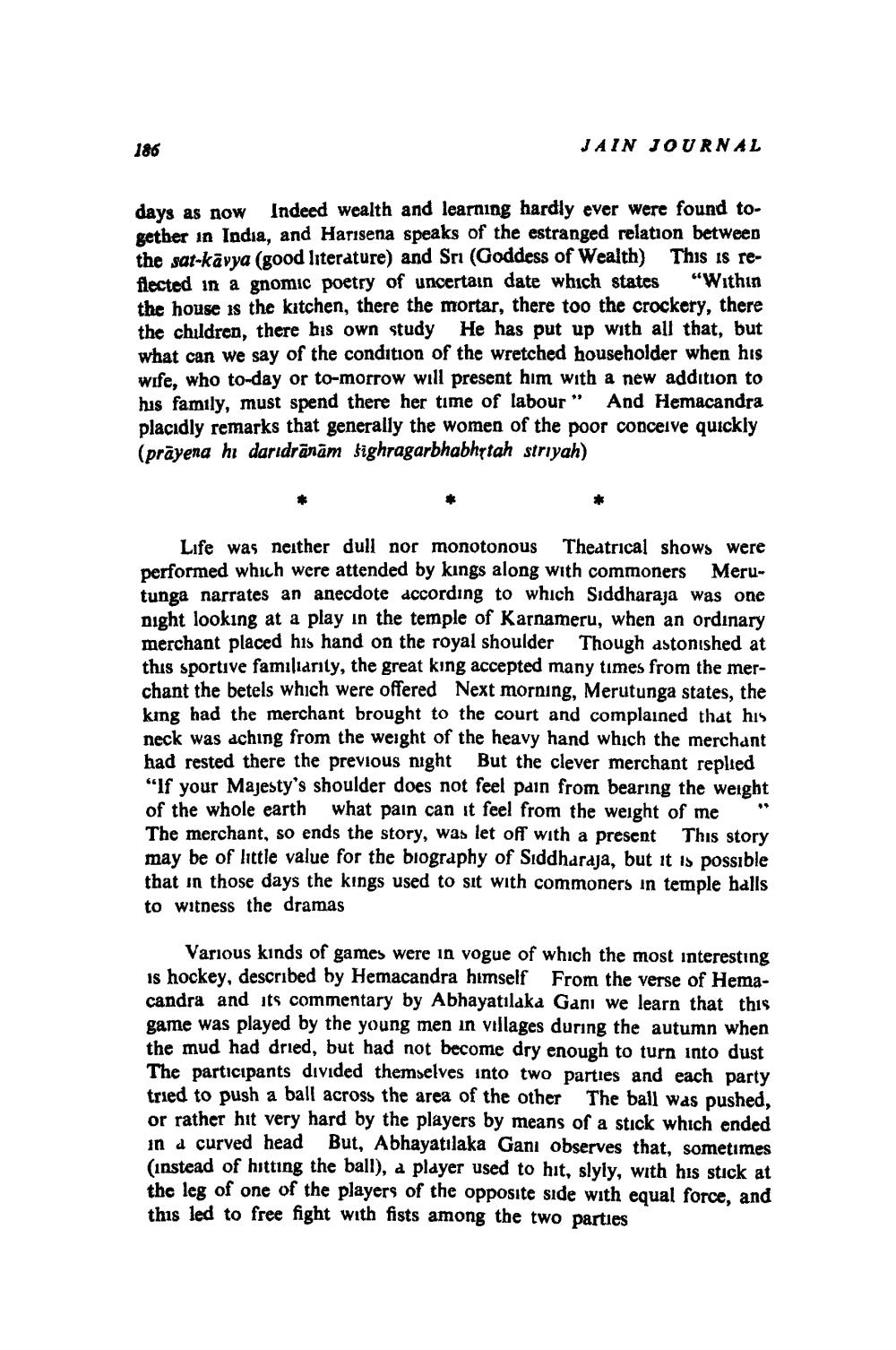________________
186
JAIN JOURNAL
days as now Indeed wealth and learning hardly ever were found together in India, and Harisena speaks of the estranged relation between the sat-kavya (good literature) and Sri (Goddess of Wealth) This is reflected in a gnomic poetry of uncertain date which states “Within the house is the kitchen, there the mortar, there too the crockery, there the children, there his own study He has put up with all that, but what can we say of the condition of the wretched householder when his wife, who to-day or to-morrow will present him with a new addition to his family, must spend there her time of labour" And Hemacandra placıdly remarks that generally the women of the poor conceive quickly (prāyena hi daridrānām sighragarbhabhytah striyah)
Life was neither dull nor monotonous Theatrical shows were performed which were attended by kings along with commoners Merutunga narrates an anecdote according to which Siddharaja was one night looking at a play in the temple of Karnameru, when an ordinary merchant placed his hand on the royal shoulder Though astonished at this sportive familiarity, the great king accepted many times from the merchant the betels which were offered Next morning, Merutunga states, the king had the merchant brought to the court and complained that his neck was aching from the weight of the heavy hand which the merchant had rested there the previous night But the clever merchant replied "If your Majesty's shoulder does not feel pain from bearing the weight of the whole earth what pain can it feel from the weight of me The merchant, so ends the story, was let off with a present This story may be of little value for the biography of Siddharaja, but it is possible that in those days the kings used to sit with commoners in temple halls to witness the dramas
Various kinds of games were in vogue of which the most interesting is hockey, described by Hemacandra himself from the verse of Hemacandra and its commentary by Abhayatılaka Gani we learn that this game was played by the young men in villages during the autumn when the mud had dried, but had not become dry enough to turn into dust The participants divided themselves into two parties and each party tried to push a ball across the area of the other the ball was pushed, or rather hit very hard by the players by means of a stick which ended in a curved head But, Abhayatilaka Gani observes that, sometimes (instead of hitting the ball), a player used to hit, slyly, with his stick at the leg of one of the players of the opposite side with equal force, and this led to free fight with fists among the two parties




